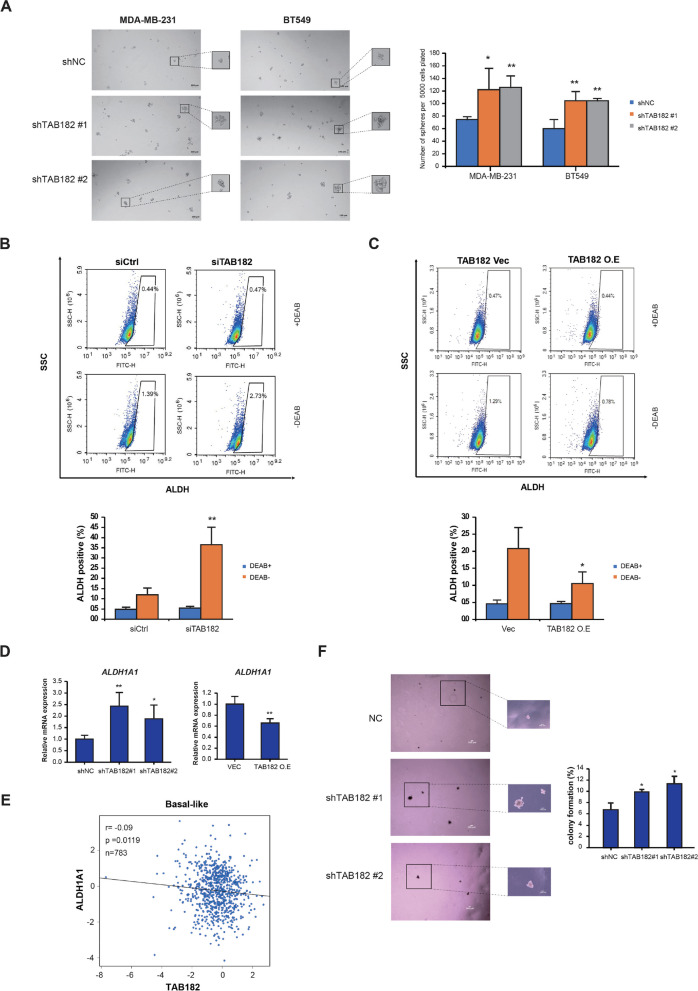Fig. 5.
TAB182 deletion contributes to the acquisition of breast cancer stem-like cell properties. A Sphere formation assays were performed with stable TAB182 KD (shTAB182 #1 and shTAB182 #2) and shNC TNBC cells. Representative photos (10 × magnification, scale bar: 100 μm) and quantification data are presented. * P < 0.05, ** P < 0.01 by Student’s t test. Error bars represent SD (n = 3). B-C An ALDEFLUOR assay was performed to measure changes in the percentages of the ALDH-positive population in TNBC cells after TAB182 was deleted (B) or overexpressed (C). DEAB was used as the negative control. SSC: side scatter. FITH: the fluorescence signal of ALDH. The percentages of ALDH-positive cells are presented at the bottom of B and C. * P < 0.05, ** P < 0.01, DEAB-siTAB182/TAB182 O.E vs. DEAB-siCtrl/Vec, by Student’s t test. D RT‒qPCR was used to determine ALDH1A1 mRNA levels in TAB182 KD or TAB182 O.E cells. mRNA levels are relative to the mRNA expression level of TAB182 in shNC or Vec cells. The data are shown as the means with SD (n = 3). * P < 0.05, *** P < 0.001 by Student’s t test. E Scatter plot showing significant Pearson’s correlation between TAB182 and ALDH1A1 mRNA levels in basal-like breast cancer (n = 783) with data obtained from the online database bc-GenExMiner v4.9. F TAB182 knockdown increased the colony formation rate of MDA-MB-231 cells in soft agar (4 × and 10 × magnification, scale bar: 100 μm), with quantification results presented in a bar plot. * P < 0.05 compared with the shNC group by Student’s t test (n = 5)

